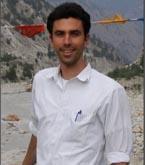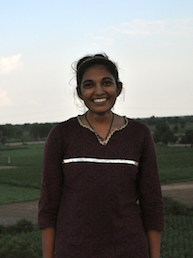A Novel, Market Based Mechanism to Incentivize Efficient Groundwater/Energy use in Indian Agriculture – Setting Up a Field Experiment in Gujarat
Background and goals
Indian agriculture is engulfed in a groundwater-energy crisis that threatens its sustainability and the country’s food security. What the impacts of “running out of water” may turn out to be is hard to predict, but it is important to understand what groundwater depletion may entail both for the hundreds of millions of farmers who rely on groundwater for their livelihood and the land which they irrigate. One possibility is an acceleration in the rates of exit from agriculture and rural-urban migration, processes that are considered by many in India, including some policy makers, to be socially undesirable. In this research, we attempt to understand the extent and patterns of groundwater related rural-urban migration and exit from agriculture in the state of Gujarat: how large of a factor is groundwater depletion in driving these processes, how they compare to “normal” exit from agriculture, how they differ across social groups and caste boundaries, and how they impact the ownership and cultivation of land `left behind’.
Approach
When it comes to groundwater utilization, as well as depletion, northern Gujarat has, in many ways, been somewhat ahead of the rest of the country. Farmers have been utilizing groundwater since the early 1960s, using increasingly powerful pumps, deeper tube-wells and sophisticated social organization to pursue the declining water tables. Today, evidence of scarcity is pervasive, and includes shrinking irrigated areas, declining water quality, and increasingly, the drying up of wells. In parts of Mehasana district, the PI has gathered evidence for rapid water table declines at the rate of 3 m/year, a rate unmatched anywhere else in the country (Columbia Water Center 2010), and the same surveys show that the average farmer predicts his/her well will dry out in 6 years.
In some villages, where hydro-geological conditions are more averse, and depletion has occurred faster, local anecdotal reports as well as preliminary qualitative surveys we conducted suggest depletion has already induced large fractions of the population to migrate from the village in search of non-agricultural incomes in cities. For example, in a village where depletion is extreme, in the words of the village head, “Young lads all live in Ahmedabad [capital city] now. What will they do here? There is no water“. These reports also suggest farmers’ ability to respond and to adapt has been strongly affected by caste and socioeconomic lines, with the poorest tending to lose access to water first but also to have the least capacity to adapt to the transition to urban areas.
To assess these hypothesis, we will begin by surveying 750 households spanning 15 villages across a rainfall gradient in northern Gujarat. This survey will attempt to relate groundwater conditions (from Piezometric data and well depth) to the extent of migration away from villages, the extent to which it is reported to be water related, the fate of land left behind, and to the occupational choices of the village’s younger generation, as these vary across caste and socio-economic boundaries. In parallel, we will explore systematic ways to colelct migrants’ contact details in order to interview them. Following these surveys, we will proceed to fine tune and extend the survey in level of details and coverage.
We plan to complete the initial survey by September and the more advanced survey by November. By December we plan to complete a first draft of a paper describing our findings.






